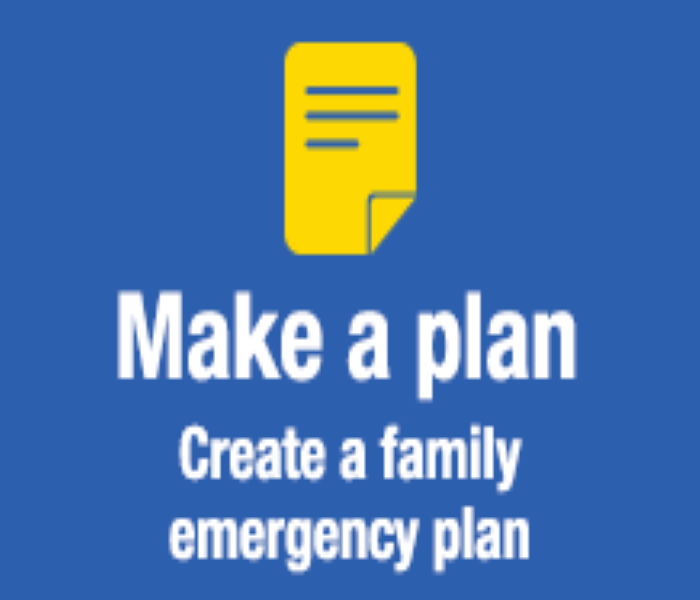National Preparedness Month: Week Two - Make A Plan
9/19/2016 (Permalink)
September is National Preparedness Month
Week Two – Make A Plan
When an emergency or disaster occurs, will you be ready? It is critical that you create a family disaster plan to keep you and your family safe, protect your property, and build your community’s resilience.
Develop a plan with the members of your household to prepare for what to do, how to find each other, and how to communicate in an emergency. Be sure your plan addresses the special and/or medical needs for you and your family.
You should:
Establish Meeting Locations
Select two family meeting locations where your family can reunite after a disaster.
- Choose one close to home
- Second farther away, in case you are asked to evacuate or can’t return to the area.
Develop an Emergency Contact Plan
Ask an out-of-state friend or relative to serve as your family’s emergency contact. After a disaster, it is sometimes easier to call long distance to unaffected areas.
- Provide every family member with the name, address, and phone number of the emergency contact and make sure each family member has a cellphone or a prepaid phone card.
- Inform your emergency contact of any family member’s special needs or medical issues.
List emergency contacts in cellphones as “ICE” (in case of emergency), which will make it easier for emergency management personnel to contact the right person in case of an emergency responder needs to make a call on your behalf.
Identify alternate communications methods:
- Show all family members how to text message, as it may be easier to send a text than make a call during an emergency.
- Learn how to use social media, which can be an effective tool to let friends and family know your location and status.
- You can use the American Red Cross's Safe and Well service to register yourself as “safe and well” or search for loved ones after a disaster.
Plan How to Evacuate
Identify and practice how you will exit your home.
Establish possible evacuation routes to ensure you are able to get to your designated meeting location(s).
Identify available modes of transportation.
Make arrangements with family, neighbors, friends, or local government if you don’t have personal transportation.
If you need assistance, contact your local public safety official to make them aware of your needs.
Plan How to Shelter in Place
Designate safe room(s) within your home. They should have:
- as few windows or doors as possible; and
- access to television, radio, and telephones.
Make sure you have necessary supplies and can access your emergency kit.
If you receive medical treatments or home health care services, work with your medical provider to determine how to maintain care and service if you are unable to leave your home for a period of time.
Consider Everyone’s Needs
Plan for everyone in your household, including individuals with access and functional needs, seniors, children, and pets.
If you or someone close to you has a disability or other access or functional need, you may need to take additional steps to prepare yourself and your family.






 24/7 Emergency Service
24/7 Emergency Service
